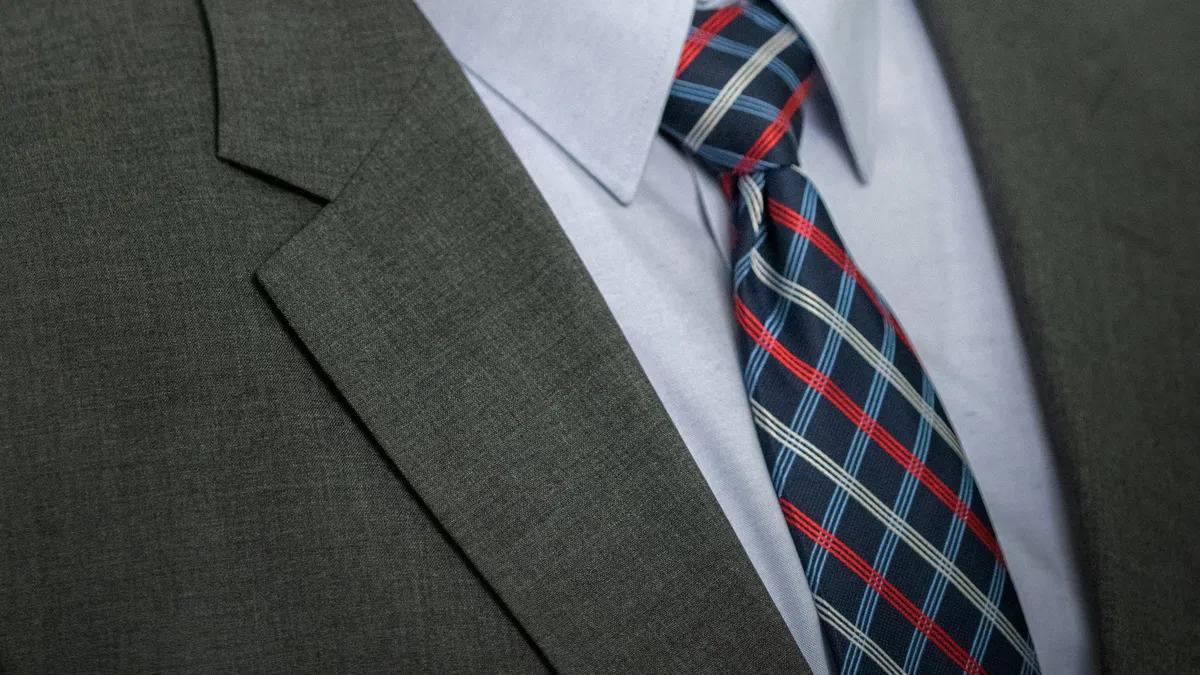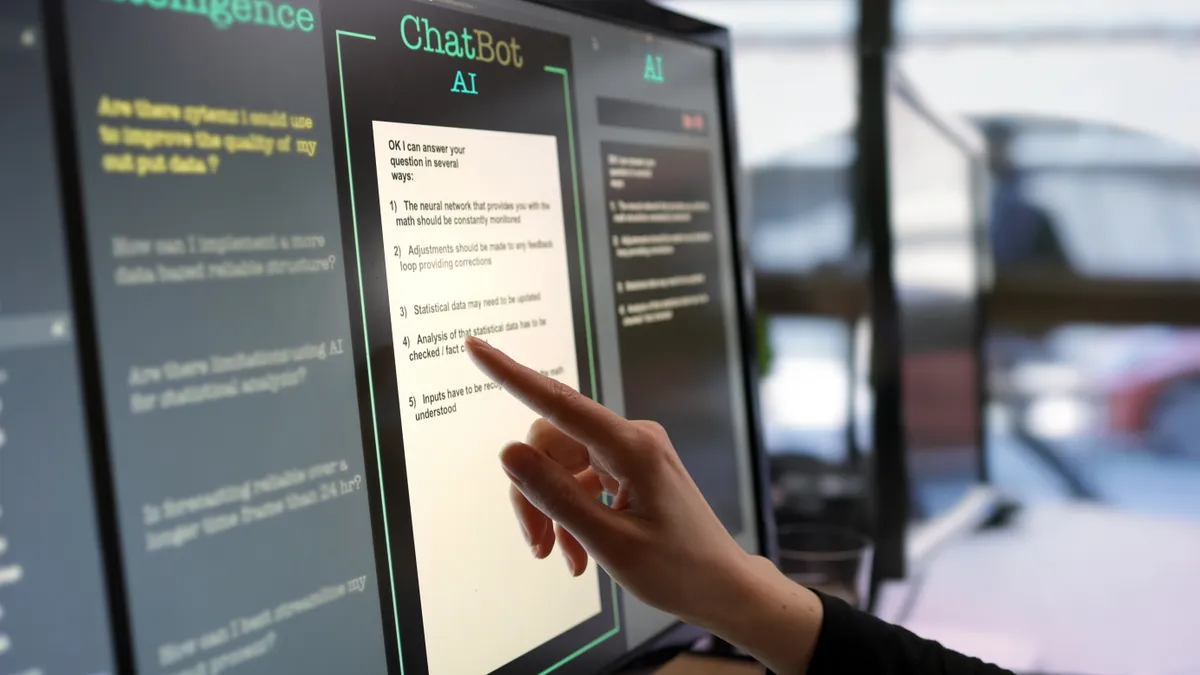When it comes to curriculum, districts have a number of plates to balance. It's easy to become overly focused on the technical skills of the STEM fields or the primary subjects measured in state accountability assessment — math and English language arts — but striking the right balance with the addition of relevant, hands-on experiences and the arts content that delivers high-demand soft skills is a challenge that has vexed many a school system.
In New York's Baldwin Union Free School District, Assistant Superintendent for Instruction Anthony Mignella — a former principal in his 22nd year as an educator — has managed to find the sweet spot in that combination, crediting his success in part to the leadership of Superintendent Shari Camhi.
During a recent conversation, Mignella told Education Dive about the district's strategy for its career academies, his advice for balancing the arts and STEM, and a new professional learning lab designed to acclimate educators to classroom redesigns that reflect modern work environments.
EDUCATION DIVE: Tell me about Baldwin's career academies and how they play into college- and career-readiness.
ANTHONY MIGNELLA: They're not your typical career academy. The way we have designed them is more to provide relevance for students as they're pursuing a certain field of interest. So they're not certified CTE programs. They are programs where the electives are connected toward a course of study students want to pursue later on to make sure that's the course that they want to pursue in college.
For instance, we have a law academy, and the electives students would take all surround different [topics] to prepare them for college law courses, as well as to make sure that they're interested in that type of work later on in life.
What we do is provide students with a lot of relevance — connections to the real world, connections to lawyers, shadow days, internships. They do competitions, mock trials and are involved in all sorts of real-life applications. We also bring people in at times to provide those real-life applications.
It's very important to have our students see the relevance of the work they're doing and to make sure we're providing them with not only what they have to cover in terms of New York's state standards, but also being innovative and finding opportunities for them to be challenged with the world of work and rigor and relevance.
Another academy we have is our medical academy. Students work with North Shore [University Hospital] and Northwell Health. They actually have to go through a series of exams and tests to make sure they are able to get in. They follow physicians around and shadow them, [along with] PAs and nurses. They are living in that world of work to make sure their passion is being followed.
When it comes to infusing that sort of real world relevance and bringing in people within these professions, what steps do you all take to establish partnerships within the community to make that possible?
MIGNELLA: We've been very fortunate to have someone who was a teacher in Baldwin, who has retired but is acting as a consultant, who really maintains those partnerships. She makes those phone calls with our various partners from Northwell Health or Hofstra University or Long Island University to program those shadow days and internships.
She puts in a lot more time than she probably bills us for. But we have her working with the high school to make sure the shadow experiences and internship experiences are prepared for each of the academies we have.
Right now, we have six total academies at the high school — education, STEM/engineering, global business, government/law, medical/health sciences and new media — and we're about to add another for next year. Without someone in that role to maintain those partnerships, that work would be even more difficult. She really helps us build and maintain the robust program we have with these partnerships.
There's also an astronaut, Jasmin Moghbeli, who is a graduate of Baldwin schools. When it comes to graduates like that, how well are you all able to coordinate with them to potentially come speak to students?
MIGNELLA: We're always reaching out to former graduates. She unfortunately, I think, is on lockdown right now because I think she's preparing for some missions, so we haven't been able to get her back recently.
But another example is in our middle school program.
We created a unique opportunity for students in our middle school who are struggling learners. Instead of your typical summer school — where they would go sit in a room for, you know, 100 minutes and study ELA and math — we brought them to the Cradle of Aviation Museum, and they brought an astronaut in. The students had the opportunity to interact with an astronaut to discuss space flight, which was a fantastic experience.
When we can't get our former graduates to come back, we try to just network and have other people in the profession come.
It seems that you do well balancing STEM focuses along with more arts-oriented content. What are some tips you have for doing well in both areas now that the arts are coming back into focus along with soft skills?
MIGNELLA: The liberal arts is an important area. As you look at automation and how technology is evolving so quickly, students need to know how to use technology, but they also need to have mastery of the four C's — communication, creativity, collaboration, critical thinking.
In our design of curriculum, we're always trying to make sure we embed those opportunities. There's different protocols. A lot of content you can just find online very easily. What we're finding as we're communicating with colleges and employers is what they want are those who can think on their feet and be critical thinkers and collaborate with others.
One of the things I would suggest to other people is, as you're looking to design your programming, what is that triangulation? You have your high school program. You have coursework. What’s the connection with college?
We make a concerted effort at reaching out to colleges to make sure students are prepared and to find out what skills they need to be successful in college, and also speaking with professional groups such as Northwell Health to make sure there's a connection with the world of work, as well.
The world of work is changing very quickly, as I'm sure you know, due to the advances of technology. That traditional classroom model where students sat in a row and content was delivered has to change because students can look up content very easily, or adults can look up content very easily, but we need to be able to use that content to think critically on our feet.
Always look at triangulation between the K-12 curriculum, the college connection and the world of work.
Baldwin has also done a lot of work redesigning classrooms. One of the interesting things I've read about is that you're launching a professional learning lab where educators can work to improve in spaces based on those redesigns.
MIGNELLA: Absolutely. Dr. Camhi is a remarkable leader, and she's always thinking about how to best prepare our students for the world of work and for the future. She's realized that, as I noted before, with the advance of technology, the traditional classroom model is not going to help our students be ready for that world of work.
We’ve visited under her leadership [places like] Google and WeWork so we could see what it is like to live in that world of work. In turn, she's held conversations with teachers, and they've had opportunities to present to her what their vision of the classroom with flexible furniture [and other tools] would look like.
But in order to make sure they could see examples of it, Dr. Camhi has created — and we did unveil it this summer — a professional learning lab, which has flexible furniture, the latest technology, tables that you can raise up and down and you could write on.
We're having our new teacher workshop and administrative workshops hosted in there. And when we use different protocols for collaboration or discussion, they can see how the furniture moves and how administrators could then show that to their teachers, and teachers take it back and use it in their classroom.
Everything in this professional learning space is moveable, and our classrooms are being modeled the same way. So when a teacher is ready, they have a discussion with Dr. Camhi about how their classroom would look and their philosophy on how this furniture would aid in helping students be ready for the world of work.
They have a discussion and then they put it together and we visit the classroom. The kids love it. They go in and they sit where they want to sit, where they're comfortable. You see kids take different seats on different days. It takes away from that institutional type of feel of some schools because the room is like going into a brand new office at Google and they're able to simulate what that collaborative environment would look like.
So when a teacher says, “Let's get into groups,” there's a protocol and the kids are working in that particular environment, and it’s the same kind of environment they would work in at college or the world of work.






















